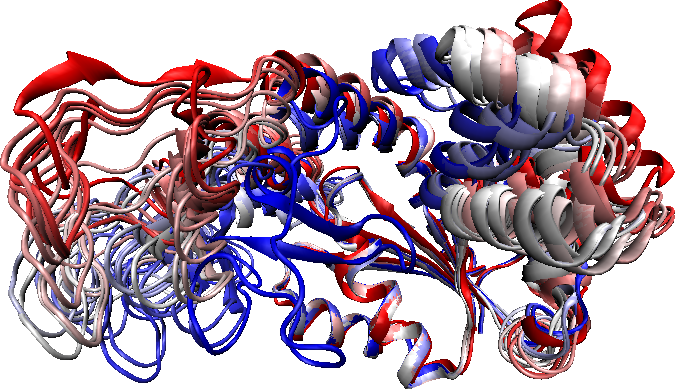Protein Structure, Kinematics, and Motion Planning
RSS 2009 Workshop
Monday, June 29th, 2009
Lydia TapiaPhD Candidate
Texas A&M University
/~ltapia/
Title
From Robots to Proteins: Randomized Motion Planning for High-Dimensional Problems
Abstract
At first glance, robots and proteins have little in common. Robots are commonly thought of as tools that perform tasks, while proteins play essential roles in many biochemical processes. However, the functionality of both robots and proteins is highly dependent on their motions. In the case of robots, complex spaces and many specialized planning methods can make finding feasible motions an expert task. In the case of protein molecules, several diseases such as Alzheimer's, Parkinson's, and Mad Cow Disease are associated with protein misfolding and aggregation. Understanding of molecular motion is still very limited because it is difficult to observe experimentally. Therefore, intelligent computational tools are essential to enable researchers to plan and understand motions.
We describe a novel computational method for studying protein folding based on algorithms developed in the robotics community. Our technique builds a roadmap (or graph) to model the protein's energy landscape. From this roadmap, we can extract many (typically thousands) of folding pathways. We can also run folding simulations on the roadmap to compute global folding properties such as folding rates and population kinetics. We have validated our technique against experimental data. We will show results for several small proteins and present a detailed case study of the subtle folding differences among a set of structurally similar proteins.
Bio
Lydia Tapia is a PhD Candidate in Computer Science at Texas A&M University working with Prof. Nancy Amato. At A&M she has participated as a fellow in the Molecular Biophysics Training and GAANN programs and was awarded the P.E.O. Scholars Award. She also attended Tulane University where she received a BS in Computer Science with academic and research honors. Prior to graduate school, she worked at Sandia National Laboratories as a member of technical research staff where she contributed to many large-scale virtual reality applications including a training simulation for first responders to a chemical warfare attack. More information about Lydia Tapia's research and publications can be found at /~ltapia
Relevant Papers
-
Papers can be found at:
/groups/amatogroup/research/folding/ -
Full details of the results presented in this talk are available in:
Kinetics Analysis Methods For Approximate Folding Landscapes, Lydia Tapia, Xinyu Tang, Shawna Thomas, Nancy M. Amato, Bioinformatics, 23(13):i539-i548, Jul 2007.
